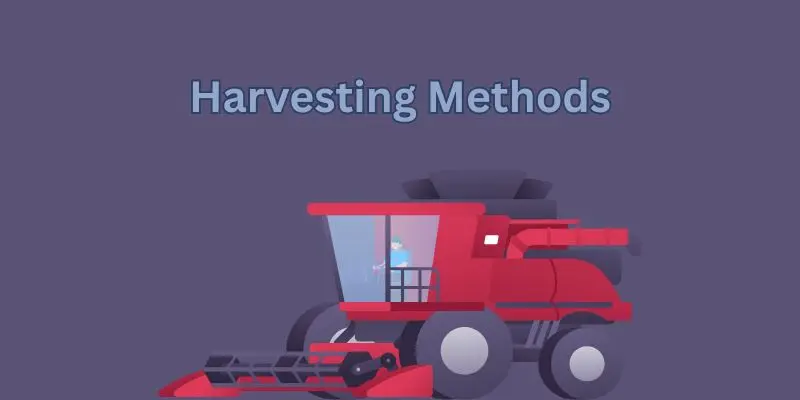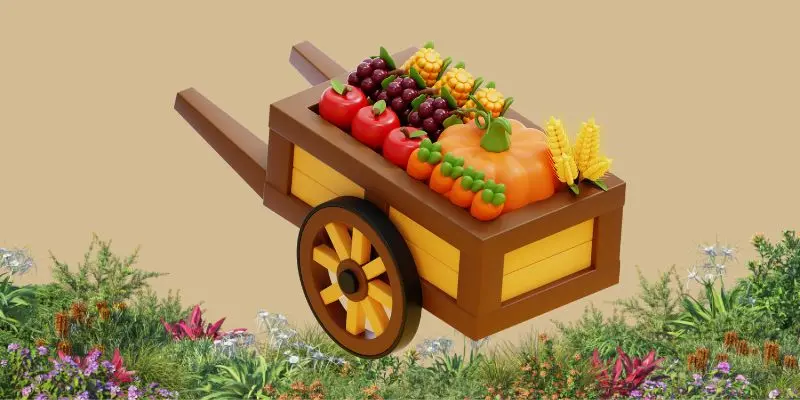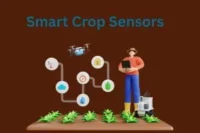Harvesting Methods: Preserving the Fruits of Labor with Precision and Care
Published: 20 May 2025

After months of planting, nurturing, and protecting crops from weather, pests, and disease, the moment of harvest finally arrives. But this moment, full of anticipation and promise, is also one of the most vulnerable. One wrong move can result in significant losses, damage to produce, or reduced market value.
Harvesting is more than just picking crops—it’s the careful culmination of a season’s dedication. The method chosen can either honor the hard work poured into every seed or undo it in an instant. This is why understanding and selecting the right harvesting method is not just important—it’s essential for every successful harvest.
So, guys, without wasting time, let’s jump into the article to learn the pros and cons of the internet.
Why Harvesting Methods Matter
Harvesting refers to the process of gathering mature crops from the fields. It marks the end of the growing cycle and the beginning of the post-harvest phase, which involves processing, storing, and distributing produce.
Why does the method matter? Because:
- Improper techniques can bruise or break produce.
- Delays in harvesting can lead to over-ripening, rot, or pest infestation.
- The wrong equipment or timing can decrease shelf life and nutritional value.
Harvesting is as critical as any other step in the agricultural cycle. Months of labor, investment, and hope hinge on getting this moment right.
Traditional Harvesting Techniques
Traditional harvesting methods have been used for centuries and still hold value, especially in small-scale or delicate crop farming.
Examples include:
- Hand-picking: Ideal for fruits, vegetables, and crops that bruise easily (e.g., tomatoes, grapes, berries).
- Sickles and scythes: Used for cutting grains and grasses.
- Shears or knives: For harvesting herbs, flowers, and leafy greens.
Benefits:
- Precision and care for individual plants.
- Less damage to crops.
- Maintains cultural and community traditions.
Limitations:
- Labor-intensive.
- Time-consuming.
- Not scalable for large farms.
Yet, despite its labor demands, traditional harvesting emphasizes the connection between farmer and field—honoring the work with a personal touch that machines can’t replicate.
Mechanical Harvesting Methods
With technological advancements, mechanical harvesting has transformed agriculture—especially for large-scale commercial farms.
Common machinery includes:
- Combine harvesters: For grains like wheat, rice, and corn.
- Mechanical pickers: For cotton, apples, or nuts.
- Diggers and lifters: For root crops like potatoes and carrots.
Advantages:
- Speeds up the harvesting process.
- Reduces labor costs.
- Efficient for large-scale operations.
Considerations:
- High initial cost of machinery.
- Requires skilled operators.
- Risk of damaging crops if settings or timing aren’t correct.
While machines offer speed and scale, they must be used responsibly and with proper calibration to ensure crop quality isn’t compromised.
Knowing the Right Time to Harvest
Timing can make or break a harvest. Picking too early might mean underdeveloped flavor and nutrition. Too late, and crops may spoil or drop.
Signs of optimal harvesting time:
- Change in color, texture, or aroma.
- Drying of leaves or stems (for grains).
- Firmness or softness depending on the crop.
- Crop-specific indicators like “milk stage” in corn or seed shattering in rice.
Factors influencing timing:
- Climate and weather forecasts.
- Intended use (fresh market vs. processing).
- Transportation and storage availability.
Making the right call at the right moment preserves quality, maximizes yield, and ensures consumer satisfaction.
Post-Harvest Handling
Harvesting doesn’t end with picking. What happens afterward is equally important in preserving quality and preventing loss.

Key steps:
- Sorting and grading: Removing damaged or low-quality produce.
- Cleaning: Removing dirt or debris.
- Packaging: Using materials that reduce bruising or spoilage.
- Storage: Controlling temperature and humidity to extend freshness.
- Transport: Ensuring timely and careful delivery to markets.
According to the FAO, up to 40% of food is lost post-harvest in developing countries due to poor handling and infrastructure. Proper post-harvest care is essential for profitability and food security.
Sustainable and Environmentally Friendly Harvesting
Today’s farmers are increasingly aware of the need to protect natural resources. Sustainable harvesting methods help balance productivity with environmental responsibility.
Practices include:
- Crop rotation and residue retention: To preserve soil health.
- Selective harvesting: Picking only mature crops to reduce waste.
- Minimal tillage: Reducing soil disturbance.
- Eco-friendly machinery: Reducing emissions and energy use.
Sustainable harvesting not only ensures healthy yields today but also protects the land for future generations. A successful harvest is one that doesn’t compromise the next.
Choosing the Right Harvesting Method
There’s no one-size-fits-all solution. The best method depends on several factors:
- Crop type: Delicate fruits vs. tough grains.
- Farm size: Small family plot vs. commercial farm.
- Labor availability: Skilled workers vs. machine operators.
- Budget and resources: Affordability of equipment and storage.
- Market requirements: Fresh produce vs. processing-grade.
Many farms benefit from a hybrid approach, combining manual care for delicate crops with mechanization for bulk harvesting.
Common Mistakes to Avoid
To maximize harvest success, be mindful of common pitfalls:
- Harvesting at the wrong time: Reduces quality and shelf life.
- Improper equipment use: Leads to crop loss or contamination.
- Skipping post-harvest steps: Results in spoilage and economic loss.
- Ignoring weather conditions: Rain or high humidity can damage crops during harvest.
Being proactive and informed can prevent costly errors and protect the integrity of your harvest.
FAQs about Harvesting Methods
Here are some of the most frequently asked questions about the Harvesting Methods: Preserving the Fruits of Labor with Precision and Care
To collect mature crops at their peak quality and quantity while minimizing losses and damage.
Correct timing ensures the best flavor, nutrition, and shelf life while avoiding spoilage or over-ripeness.
It increases efficiency and reduces labor costs, especially for large-scale farming operations.
Proper handling prevents spoilage, maintains quality, and improves market value during storage and transport.
Conclusion:
Harvesting is more than an agricultural task—it’s a deeply human act of completion and renewal. It reflects every decision made throughout the growing season and sets the tone for what’s to come. By choosing the right harvesting method—whether traditional, mechanical, or sustainable—farmers honor their hard work, protect their yield, and provide the best possible food to their communities.
In every careful cut, in every picked fruit, lies a story of dedication, resilience, and the enduring bond between people and the land. That’s the real harvest.

- Be Respectful
- Stay Relevant
- Stay Positive
- True Feedback
- Encourage Discussion
- Avoid Spamming
- No Fake News
- Don't Copy-Paste
- No Personal Attacks

- Be Respectful
- Stay Relevant
- Stay Positive
- True Feedback
- Encourage Discussion
- Avoid Spamming
- No Fake News
- Don't Copy-Paste
- No Personal Attacks





